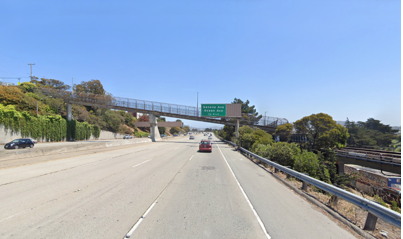The Farallones Street Pedestrian Overcrossing Project Background

Construction of Interstate 280 in the early 1960s greatly improved the efficiency of vehicular travel into Downtown San Francisco but diminished pedestrian connectivity between the communities of Oceanview and Ingleside and Excelsior. In 1962, the completion of the Whipple Avenue pedestrian overcrossing in San Francisco joined the Oceanview neighborhood and the Excelsior neighborhood. Spanning the width of I-280, the Whipple Avenue overcrossing has made it easier for pedestrians and cyclists to move across the highway and enjoy some of San Francisco’s unique treasures including Cayuga Park. Residents of the Excelsior neighborhood were able to easily access Muni on San Jose Avenue.
While the design served its purpose when it initially opened, the 60-year-old overcrossing does not meet today’s ADA standards. The current overcrossing has a 14% grade, making it challenging for people who employ ambulatory assistance devices to use the over-cross. The project team is considering widening the current 8-foot width to 10 feet, where possible. The extra width would benefit strollers, pedestrians, and cyclists using the overcrossing at the same time.
Aesthetically, the current overcrossing is consistent with the utilitarian aspect of the era from which it was conceived. It is more about function than form, and the function is not equal to today’s ADA standards. The lack of lighting and the limited width of the overcrossing limits the hours when people can use it and how many can cross efficiently at any given time.
With people looking for cleaner alternatives for commuting, building a new pedestrian overcrossing near Cayuga Park will encourage residents to leave their cars at home and enjoy the beauty of San Francisco.
Please view the images of the current over-cross and the proposed design to see how function and form will play an important role in the future of pedestrian-friendly transportation.

